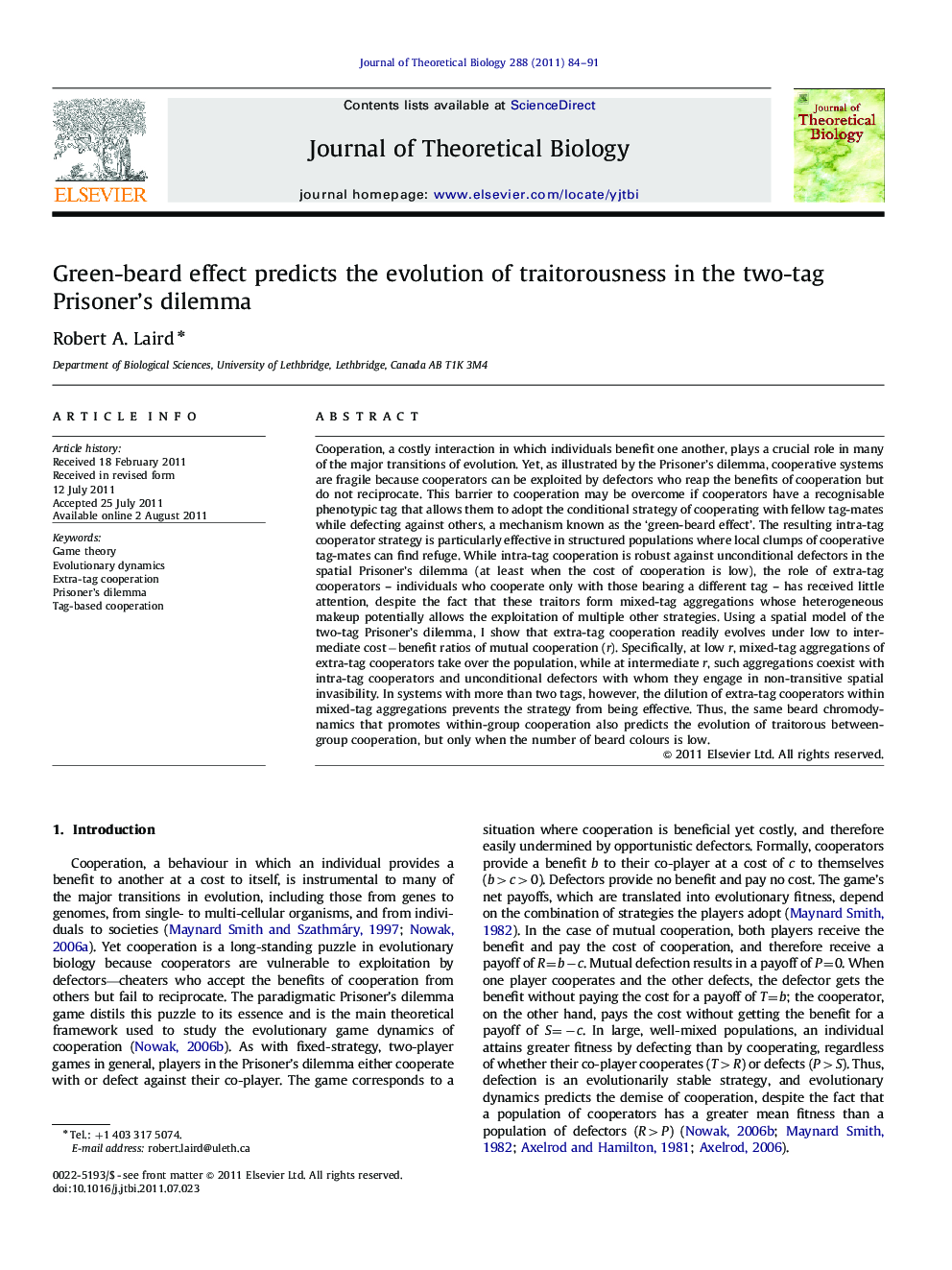| کد مقاله | کد نشریه | سال انتشار | مقاله انگلیسی | نسخه تمام متن |
|---|---|---|---|---|
| 4496886 | 1623922 | 2011 | 8 صفحه PDF | دانلود رایگان |

Cooperation, a costly interaction in which individuals benefit one another, plays a crucial role in many of the major transitions of evolution. Yet, as illustrated by the Prisoner's dilemma, cooperative systems are fragile because cooperators can be exploited by defectors who reap the benefits of cooperation but do not reciprocate. This barrier to cooperation may be overcome if cooperators have a recognisable phenotypic tag that allows them to adopt the conditional strategy of cooperating with fellow tag-mates while defecting against others, a mechanism known as the ‘green-beard effect’. The resulting intra-tag cooperator strategy is particularly effective in structured populations where local clumps of cooperative tag-mates can find refuge. While intra-tag cooperation is robust against unconditional defectors in the spatial Prisoner's dilemma (at least when the cost of cooperation is low), the role of extra-tag cooperators – individuals who cooperate only with those bearing a different tag – has received little attention, despite the fact that these traitors form mixed-tag aggregations whose heterogeneous makeup potentially allows the exploitation of multiple other strategies. Using a spatial model of the two-tag Prisoner's dilemma, I show that extra-tag cooperation readily evolves under low to intermediate cost−benefit ratios of mutual cooperation (r). Specifically, at low r, mixed-tag aggregations of extra-tag cooperators take over the population, while at intermediate r, such aggregations coexist with intra-tag cooperators and unconditional defectors with whom they engage in non-transitive spatial invasibility. In systems with more than two tags, however, the dilution of extra-tag cooperators within mixed-tag aggregations prevents the strategy from being effective. Thus, the same beard chromodynamics that promotes within-group cooperation also predicts the evolution of traitorous between-group cooperation, but only when the number of beard colours is low.
► Tag-based cooperation occurs through recognition of arbitrary phenotypic traits.
► This ‘green-beard effect’ usually occurs when tag-mates cooperate with one another.
► Surprisingly, ‘traitors’ can also succeed by forming mixed-tag assemblages.
► Invasion conditions include spatial structure, low cost of cooperation and few tags.
► Strategy dynamics should be considered at the cluster, not just individual, level.
Journal: Journal of Theoretical Biology - Volume 288, 7 November 2011, Pages 84–91